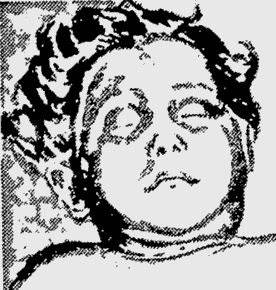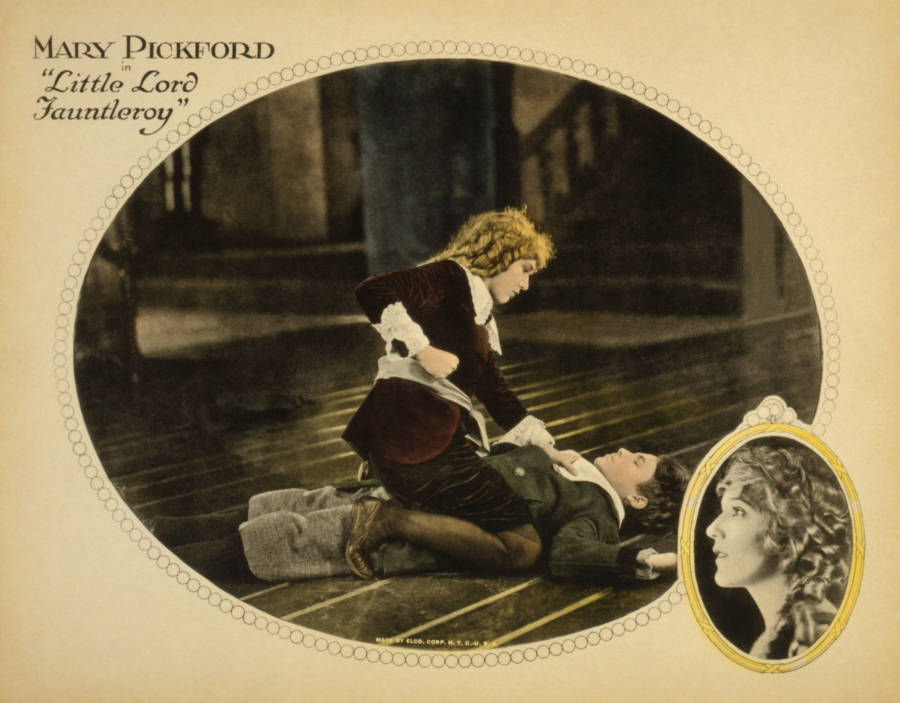He was named "Little Lord Fauntleroy" after a well-dressed character in a classic children's book, but nothing about this murdered child's story was innocent or entertaining.
A century ago, middle America was confronted with a tragic mystery: the discovery of a dead young boy in a quarry pond. Besides his expensive clothes, the police couldn’t determine anything about his identity. But he would be dubbed the Little Lord Fauntleroy after a dapper young character featured in a classic children’s book of the time.
As no one came forward to claim the body nor seemed to know the small child, the mystery of his identity and cause of death remains unknown — even today.
Finding Little Lord Fauntleroy

Wikimedia CommonsSketch of the Little Lord Fauntleroy found in 1921 in Waukesha, Wisconsin.
On the morning of March 8, 1921, in Waukesha, Wisconsin John Brlich, an employee of the O’Laughlin Stone Company, was strolling near the quarry pond when he made a ghastly discovery.
He saw a small body floating in the pond and rushed back to the office of the stone company to contact Waukesha County Sheriff, Clarence Keebler. Keebler contacted County Coroner, L.F. Lee, and the two officials drove to the quarry pond.
County officers collaborated with the Milwaukee police department to conduct a wide search for the identity of the dead child. The police made note of his physical features in their files. The boy was likely between five and seven years old. He was quite short, less than four feet tall. He had blond hair and brown eyes. He did not appear malnourished and bore no physical marks of abuse on his body.
But what most captured the police’s, and consequently the nation’s, attention was his strange attire. The small boy had been dressed in a blouse or button-up shirt, a gray sweater from the expensive Bradley Knitting Company, underwear, black stockings, and patent leather shoes. His clothes were of the highest quality.
Newspaper reporters read the police file and dubbed the mysterious dead boy the Little Lord Fauntleroy for a lavish character featured in a hugely popular piece of sentimental fiction in the early twentieth century, a children’s book by Frances Hodgson Burnett. This children’s book was later adapted into dozens of stage plays and films — but little more would be written about the strange dead boy in Waukesha.
Foul Play Suspected
Investigators could only guess at how long the child had been in the pond, and they estimated anywhere between less than a week and six months. Besides the boy’s clothing which suggested he came from money, police were at a loss for his identity.
In an attempt to gather information, the police put the Little Lord Fauntleroy on display at the local funeral home and invited the public. While groups came to view the child, no one could offer any more information, until a quarry worker named Mike Koker.
He would be among the first to give the police a lead on the murder of their Little Boy Fauntleroy. Koker informed them that he had witnessed a young woman in a red sweater wandering around the pond five weeks before the corpse was found.
Koker added that when he questioned her about what she was doing, she anxiously inquired about whether he had seen a little boy in the neighborhood. Koker added that the woman in red then joined a male companion and drove away in a car.

Wikimedia CommonsAn antique lobby card showing Mary Pickford about to punch actor Francis Marion during a scene from the 1936 film, Little Lord Fauntleroy.
The couple was never located by police, but the authorities did receive a tip that the woman had died by suicide in the very same pond that the unknown boy had been found. They proceeded to set off dynamite in the water in the hopes that the explosion would bring the corpse to the surface. Despite their best efforts, the police never found an additional corpse.
Detectives first theorized that the couple had sent the little boy off while they made love and that he had tragically fallen into the pond and drowned.
However, the coroner’s examination revealed that the body had a deep cut on the head, which indicated that he had been hit on the head with a blunt object. The examination also revealed that he had very little water in his lungs, which meant that the child was likely dead before he wound up in the pond.
The Investigation Grows Colder
The police posted a picture of the boy in every newspaper in the midwest and the three men — Sheriff Keebler, C.A. Dean, and District Attorney Allen D. Young — offered a financial reward of $250 dollars for any information on the identity of the unknown boy or his killers. No one came forward. They raised the reward to $1000 dollars and still, no one said a word.
It seemed the case would close until David Dobrick, the owner of the Liberty Department Store in Waukesha, insisted to police that he had sold the clothes the Little Lord Faunterloy was found wearing in a sale in January, but there was no way to determine who actually bought the articles of clothing.
Another break surfaced a few months later when a witness claimed to be able to identify the unknown boy. A Chicago man named J.B. Belson stated that the child was his nephew and the son of his sister, Mrs. G.E. Hormidge. Belson explained that his sister’s ex-husband had kidnapped their two children and even threatened to kill them on several occasions.
This seemed a promising lead, but when the police investigated Belson’s claims, they verified that the children were all alive and well, thus their Little Lord Faunterloy could not be counted as Belson’s nephew.

Wikimedia CommonsHomer Lemay, a six-year-old boy who could possibly be the true identity of Little Lord Fauntleroy.
Defeated, Sheriff Keebler eventually announced that the Little Lord Fauntleroy’s remains would be transported to the Weber Funeral Home to be prepared for burial. A local woman named Minnie Conrad spearheaded a fundraiser to help with the funeral costs.
At 2:00 PM on March 14, 1921, a small white casket was gently lowered into the ground at Prairie Home Cemetery. An unknown person had scrawled “Our Darling” on the lid of the casket. Conrad placed a bouquet on the boy’s grave every year until her death.
The Case Of Little Lord Fauntleroy Closed?
But there is a strange epilogue to this tragic mystery.
In 1949, a medical examiner from Milwaukee named E.L. Tharinger hypothesized that the unknown boy could actually have been a child named Homer Lemay, who had disappeared around the time that the Little Lord Fauntleroy in the quarry pond was found.
Homer’s father was questioned after his son’s continued absence, but the elder Lemay stated that Homer had been adopted by a Chicago couple named Norton in 1921. Lemay claimed that they had taken the boy to Argentina and later sent a clipping to him that alleged the boy was killed in an automobile accident there. Police investigated Lemay’s story but found no proof to validate his claims including no such newspaper nor couple by that name.
On May 16, 1949, Dr. Tharinger held a press conference and strongly encouraged the exhumation of the unknown boy. However, he looked to Sheriff Leslie P. Rockteacher and Coroner Alvin H. Johnson to make the final decision and they ultimately decided to let the Little Lord Fauntleroy rest in peace.
Little Lord Fauntleroy remains buried in Prairie Home cemetery to the present day under a simple tombstone that belies so little about the great mystery that surrounds him. His tombstone reads: “Unknown Boy Found in O’Laughlin Quarry. Waukesha, Wis. March 8, 1921.”
After this look at the mysterious case of Waukesha’s Little Lord Fauntleroy, check out the horrifying true crime of the boy in the box. Then, read about these parents who kept their children in a plywood box.





